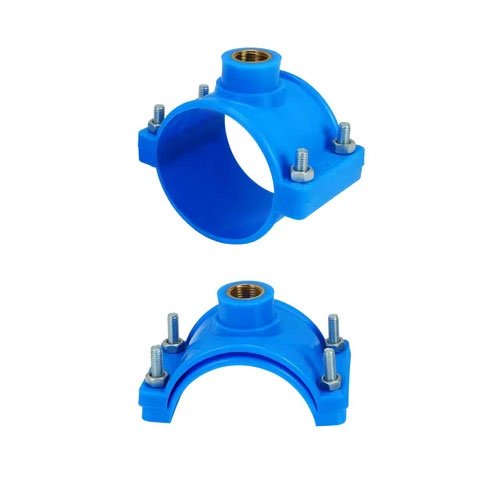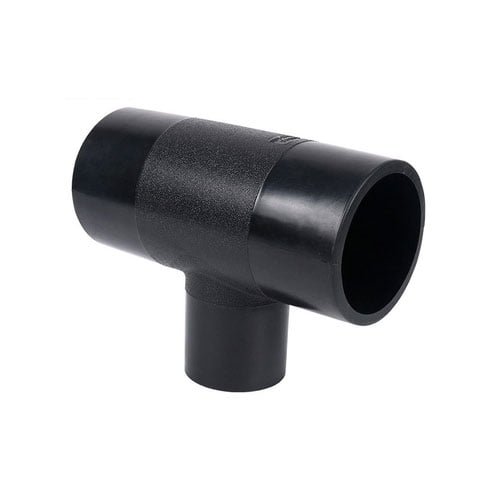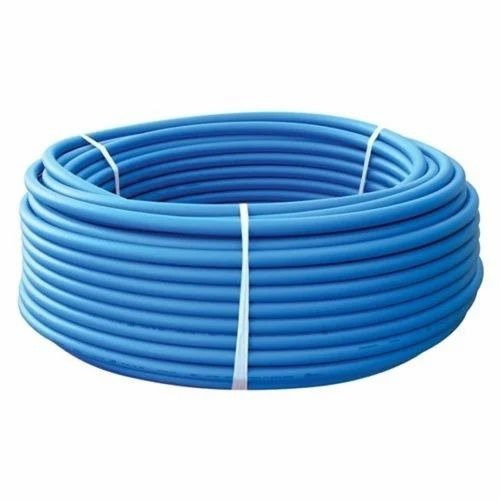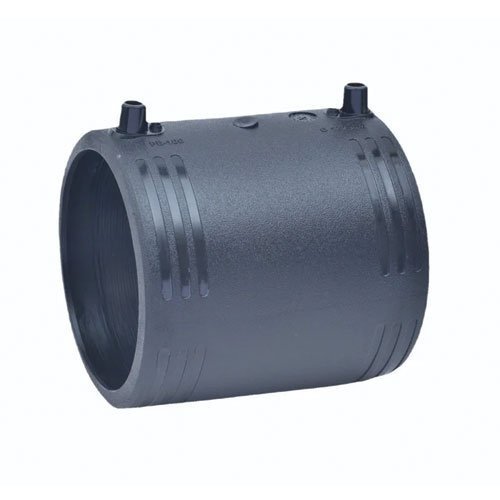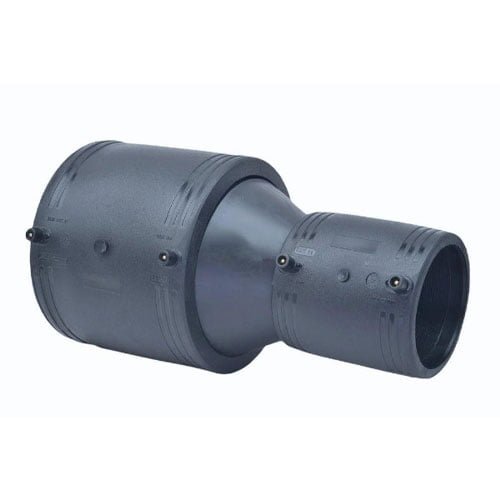HDPE pipe fittings are essential components used in the installation and assembly of HDPE pipes, which are widely used in various industries such as water supply, gas distribution, drainage systems, and more. These fittings play a crucial role in ensuring the proper functioning and integrity of HDPE piping systems. Here are some key points about HDPE pipe fittings:
1. Material: HDPE pipe fittings are typically made from high-density polyethylene, a thermoplastic polymer known for its high strength, durability, and chemical resistance. HDPE is also recyclable, making it an environmentally friendly choice.
2. Types of Fittings: There are various types of HDPE pipe fittings designed to suit different applications and installation requirements. Some common types include:
- Couplings: Used to connect two HDPE pipes together.
- Elbows: Allow for changes in direction in the piping system.
- Tees: Used to create branches in the pipeline.
- Reducers: Used to connect pipes of different diameters.
- End Caps: Seal off the ends of HDPE pipes.
3. Advantages:
- Durability: HDPE pipe fittings are highly resistant to corrosion, abrasion, and chemical damage, ensuring long-term performance and reliability.
- Leak Resistance: Properly installed HDPE fittings offer excellent leak resistance, minimizing the risk of costly leaks and downtime.
- Flexibility: HDPE pipes and fittings are flexible and can withstand a wide range of temperatures and pressures, making them suitable for various applications.
- Easy Installation: HDPE fittings are lightweight and easy to handle, simplifying the installation process and reducing labor costs.
- Recyclability: HDPE is a recyclable material, promoting sustainability and environmental responsibility in piping systems.
4. Applications: HDPE pipe fittings find applications in diverse industries, including:
- Water supply and distribution systems
- Gas distribution networks
- Sewer and drainage systems
- Industrial piping for chemicals, acids, and corrosive fluids
- Agricultural irrigation systems
5. Maintenance: HDPE pipe fittings require minimal maintenance due to their inherent durability and resistance to corrosion. Regular inspections and preventive maintenance can ensure optimal performance and longevity.
6. Standards and Regulations: HDPE pipe fittings must comply with industry standards and regulations to ensure safety, performance, and compatibility with other piping components.
In summary, HDPE pipe fittings play a vital role in modern piping systems, offering durability, reliability, and environmental sustainability. Their versatility and performance make them a preferred choice for various applications across different industries.
The Environmental Benefits of HDPE
High-Density Polyethylene (HDPE) offers several environmental benefits compared to other materials, particularly in the context of piping systems. Here are some of the key environmental advantages of HDPE:
- Recyclability: HDPE is a highly recyclable material. After its service life in applications like piping, HDPE can be collected, sorted, and recycled into new products. This reduces waste and promotes a circular economy, minimizing the environmental impact of plastic consumption.
- Longevity: HDPE pipes and fittings are known for their durability and long service life, often lasting for decades without degradation. This reduces the need for frequent replacements, saving resources and energy that would otherwise be used in manufacturing and installing new piping systems.
- Leak Prevention: HDPE pipes and fittings are joined using heat fusion techniques that create strong, leak-resistant connections. This minimizes the risk of leaks and pipe failures over time, preventing potential environmental contamination from leaking fluids and reducing the need for repairs.
- Chemical Resistance: HDPE is highly resistant to chemicals, corrosion, and abrasion. This property makes it suitable for a wide range of applications, including conveying corrosive fluids and chemicals without the risk of material degradation or environmental harm.
- Lightweight and Transport Efficiency: HDPE pipes and fittings are lightweight compared to traditional materials like metal or concrete. This reduces transportation costs and energy consumption during shipping, contributing to lower carbon emissions and environmental impact associated with transportation.
- Energy Efficiency: The manufacturing process of HDPE requires less energy compared to many other materials used in piping systems. Additionally, the lightweight nature of HDPE reduces the energy needed for handling, installation, and maintenance, further enhancing its overall energy efficiency.
- Low Environmental Footprint: HDPE production generates relatively low emissions and pollutants compared to alternative materials. Its eco-friendly characteristics, such as recyclability, durability, and chemical resistance, contribute to a lower environmental footprint throughout its lifecycle.
- Water Conservation: HDPE pipes are often used in water supply and distribution systems. Their leak-resistant properties help conserve water by minimizing losses due to leaks, ensuring efficient water delivery while reducing water waste and associated environmental impacts.
Overall, HDPE offers a range of environmental benefits that make it a preferred choice for various applications where sustainability and eco-friendliness are priorities. Its recyclability, durability, leak resistance, and energy efficiency contribute to a more environmentally responsible approach in infrastructure and industrial sectors.
Durability and Longevity of HDPE Pipe Fittings
HDPE (High-Density Polyethylene) pipe fittings are known for their exceptional durability and longevity, making them a preferred choice for various piping applications. Here are the key aspects contributing to the durability and long service life of HDPE pipe fittings:
- Material Strength: HDPE is a thermoplastic polymer known for its high strength-to-density ratio. It exhibits excellent tensile strength, impact resistance, and toughness, allowing HDPE pipe fittings to withstand heavy loads, pressure fluctuations, and external stresses without deforming or failing.
- Chemical Resistance: HDPE is highly resistant to chemicals, acids, alkalis, and corrosive substances commonly found in industrial environments. This chemical resistance ensures that HDPE pipe fittings maintain their structural integrity even when exposed to harsh chemicals, reducing the risk of degradation and failure.
- Abrasion Resistance: HDPE pipe fittings are resistant to abrasion and wear, making them suitable for applications where abrasive materials or particles may be present in the fluid being conveyed. This resistance helps prevent damage and extends the service life of the fittings.
- UV Resistance: HDPE is inherently resistant to ultraviolet (UV) radiation, making it suitable for outdoor and above-ground applications. HDPE pipe fittings can withstand prolonged exposure to sunlight without degradation, ensuring long-term performance in outdoor installations.
- Flexibility: HDPE pipe fittings exhibit a degree of flexibility that allows them to accommodate thermal expansion and contraction, ground movement, and minor alignment adjustments without cracking or breaking. This flexibility contributes to their longevity by reducing stress concentrations and potential failure points.
- Leak Resistance: HDPE pipe fittings are joined using heat fusion techniques, creating seamless and leak-resistant connections. The absence of mechanical joints reduces the risk of leaks over time, ensuring reliable performance and minimizing maintenance requirements.
- Low Maintenance: HDPE pipe fittings require minimal maintenance compared to materials like metal or concrete. Their resistance to corrosion, chemical attack, and biological growth reduces the need for frequent inspections and repairs, contributing to cost savings and prolonged service life.
- Service Life: HDPE pipe fittings are designed to have a long service life, often exceeding 50 years or more under normal operating conditions. This extended lifespan reduces the frequency of replacements and upgrades, resulting in lower lifecycle costs and environmental impact.
In summary, the durability and longevity of HDPE pipe fittings stem from their robust material properties, chemical resistance, abrasion resistance, UV resistance, flexibility, leak resistance, low maintenance requirements, and extended service life. These characteristics make HDPE a reliable and cost-effective choice for a wide range of piping applications in various industries.
The recycling process for HDPE
The recycling process for HDPE (High-Density Polyethylene) involves several steps to collect, sort, clean, and reprocess the material into new products. Here’s an overview of the recycling process for HDPE:
- Collection: The first step in HDPE recycling is the collection of used HDPE materials. This can include items such as plastic bottles, containers, packaging materials, pipes, and other products made from HDPE. Collection methods can vary, including curbside recycling programs, drop-off centers, and commercial collection from industries.
- Sorting: Once collected, the HDPE materials are sorted based on their color and grade. HDPE comes in different colors, such as natural (clear), white, black, and colored. Sorting helps segregate the materials into homogeneous streams, which is crucial for the recycling process.
- Cleaning: After sorting, the HDPE materials undergo cleaning to remove contaminants such as dirt, labels, adhesives, and residues. Cleaning can involve washing, rinsing, and sometimes shredding the materials to ensure they are free from impurities before further processing.
- Shredding and Size Reduction: The cleaned HDPE materials are then shredded into smaller pieces or pellets. Shredding increases the surface area of the material, making it easier to process and melt during recycling. Size reduction may also involve granulating the HDPE into uniform particles.
- Melting and Extrusion: The shredded or granulated HDPE is fed into an extruder, where it undergoes melting and compounding. The extrusion process involves heating the HDPE to a molten state and forming it into a continuous shape, such as pellets, sheets, or pipes. Additives may be mixed with the melted HDPE to enhance its properties or achieve specific characteristics in the final product.
- Molding or Forming: The molten HDPE can be molded or formed into various products using molding techniques such as injection molding, blow molding, or rotational molding. These processes allow the molten HDPE to take the desired shape and solidify into finished products like bottles, containers, pipes, furniture, and more.
- Cooling and Solidification: Once molded or formed, the HDPE products are cooled and allowed to solidify. Cooling helps the material regain its structural integrity and strength, ensuring that the final products meet quality standards and specifications.
- Quality Control and Testing: Throughout the recycling process, quality control measures are implemented to ensure the recycled HDPE meets industry standards for strength, durability, color consistency, and other properties. Testing may include mechanical testing, visual inspection, and chemical analysis to verify the quality of the recycled HDPE products.
- Distribution and Usage: The recycled HDPE products are then distributed to manufacturers, retailers, and consumers for use in various applications. Recycled HDPE can be incorporated into new products or materials, reducing the demand for virgin plastics and promoting sustainability in manufacturing processes.
Overall, the recycling process for HDPE involves multiple stages to transform used HDPE materials into high-quality recycled products, contributing to resource conservation, waste reduction, and environmental sustainability.



